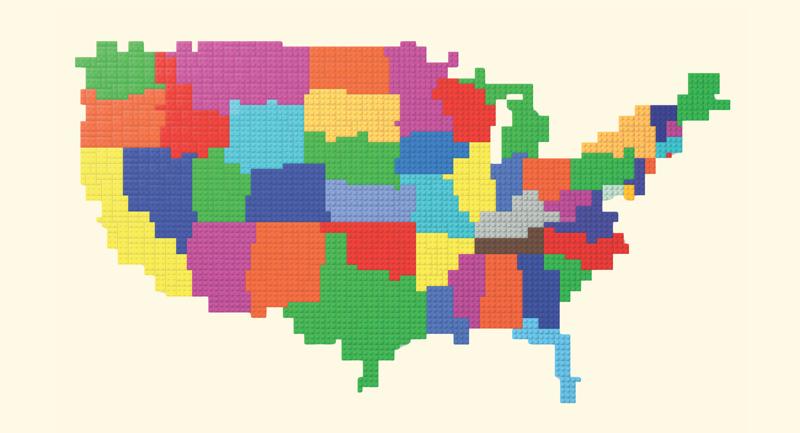The history of standardized testing in the United States is complicated. For example, Horace Mann is regarded by many educational historians as the father of standardized tests for his role in bringing the Prussian model of testing to the United States (Garrison, 2020). In this early conceptualization of what would later become the contemporary model of standardized testing, Mann was clear that tests were crucial in creating and maintaining a common school system for all children (Mann, 1865). Mann, however, was also an avid phrenologist, and researchers have pointed out that Mann “wielded physiological laws in his many reform efforts . . . including phrenologically based racism, sexism, and classism that permeated his writings” (Tomlinson, 2005, p. xi).
Now, as we are emerging from a global pandemic that caused widespread school closures and highlighted many inequities in our systems, it is important to think critically about the origins of standardized testing, and how what began as an effort to ensure students shared a common touchstone for what they learned in schools became aligned with a set of ideologies constructed to disproportionately harm marginalized student populations and to maintain the status quo.
While perhaps not Mann’s original intent, the concept of standardized testing was quickly taken up by eugenicists who aimed to “improve” human populations through a variety of genetic, social, and cultural exclusions (Watkins, 2001; Winfield, 2007). Many people correctly attribute the eugenics movement in the United States to unconscionable actions such as forced sterilizations and government-sanctioned practices such as redlining (Lovett, 2020). However, what is often missed are the insidious ways that eugenics became sewn into the fabric of U.S. schools.
Educational reform in the 1910s and 1920s—a time that marked the height of the eugenics movement in the United States—focused on teacher training, curriculum development, school organization, and, especially, testing. During this time, the first Intelligent Quotient (IQ) exams were developed and tested on World War I recruits, a move that scholars like Winfield (2007) and Berliner (2019), among others, agree had a large impact on schools. IQ testing was particularly attractive because it promised the ability to “quickly, almost miraculously, measure the innate capacity of the brain” (Lemann, 1999, p. 18). Eugenicists, for their part, saw IQ testing as a way to prove “feeblemindedness,” which was one of the criteria noted in the Supreme Court’s Buck v Bell decision of 1927 that upheld forced sterilizations for those deemed “imbeciles” through various means.
Whether it is intended or not, standardized tests are still doing what they were designed to do—to further marginalize specific students and populations.
Many influential educators proclaimed that these tests were a way to “scientifically” show student merit, arguing that such tests were superior to other ways of sorting students that were generally based in indicators of privilege (Lemann, 1999; Watkins, 2001). But there was often a darker tinge to this rationale. Franklin Bobbitt (1909), who is regarded as one of the “fathers of curriculum” in the United States, wrote that testing is one way to have “an accurate method of measuring and evaluating educational processes to . . . diagnose specific situations, and prescribe remedies for the child who is marred in the original making, one who springs from a worm-eaten stock” (p. 390). From the way this statement seamlessly jumps from measurement and remedies to “marred” children from “worm-eaten stock,” it is not difficult to see how eugenicist ideologies became woven into the everyday practices of testing and tracking that are still used in many contemporary schools across the nation.
After the eugenics movement in the United States became embraced by the Nazi party in World War II, American politicians worked to distance themselves from the atrocities of the Holocaust and eugenics became less publicly accepted in the United States. However, the damage to the American educational system had already been done. Results of these highly biased tests fed deficit ideologies of economically disenfranchised students that remain salient in the media (Yosso, 2002), teacher education programs (Beneke & Cheatham, 2020), and in schools today (Fergus, 2017). It is no surprise, then, that No Child Left Behind’s accountability components, which were closely linked to standardized testing, were shown to disproportionately harm Black, Brown, indigenous, students of color, and other marginalized populations in terms of testing, tracking, and, in many ways, school funding (Watkins, 2015). Whether it is intended or not, standardized tests are still doing what they were designed to do—to further marginalize specific students and populations.
Time to Rethink Testing
During the school closures and move to online learning because of the COVID-19 pandemic, students, teachers, and administrators across the United States had a temporary respite from standardized testing as the U.S. Education Department allowed states to cancel their annual tests. Consider these quotes, which were publicly stated reflections on changes in national testing policies that we gathered from various social media platforms that underscore how students and other educational stakeholders have felt about the shift in standardized tests due to COVID-19:
“Tests give me anxiety. Like they make me feel like I’m worthless. This year, we had less tests. That helped, at least a little.” –12-year-old student, Maryland
“With less testing, I can actually focus on my job—to teach. That’s a great feeling. I have the freedom to try new things, to make mistakes. Yes, there’s a pandemic. Yes, that’s been challenging. But even in the middle of that challenge, the idea that tests would be eliminated made me feel . . . lighter.” –10th grade science teacher, South Carolina
“This experience has helped me to refocus on some things. We tested these kids and acted like they were about to be incarcerated—look forward, no cell phones, nothing in your pockets, no talking during breaks, no talking about the tests. The list goes on. What are we really doing here? Silver linings, right? The pandemic has made me really question the validity of these exams.” –middle school principal, Virginia
“I’m a little scared but I’m excited. What would it mean to teach in a world without tests? I was raised with tests. They were a normal part of my childhood. What does it mean that COVID-19 could change all that? Could I be a better teacher?” –teacher candidate, Maine
Although this position is not universally shared, with several nationally recognized groups like Education Trust and the National Urban League calling for tests that help “enlighten us about the impacts of this pandemic on student learning” (Ujifusa, 2020, n.p.), many states are questioning the validity and necessity of standardized tests (Middleton, 2020).
For some educators, pulling at the threads of testing might feel like it will unravel the American educational system as we know it. After all, so much of American life already feels unhinged due to COVID-19, with teachers scrambling to help students through distance learning, counselors struggling to help students they cannot see, and administrators working to remotely support their faculty. Further, there is a strong argument to be made that not all tests are bad. Tests can certainly be invaluable to teachers who use them as a roadmap to help form and inform the art of teaching; helping the teacher know how to best serve students (McTighe, Seif, & Wiggins, 2004). However, when we situate testing within the framework of eugenics, it’s hard not to see the harm that nationally based standardized testing can do.
Perhaps more important, the nation is potentially ripe to re-imagine schooling without big data guiding every move a teacher makes in the classroom. The coalescence of COVID-19 as it has intersected with justice-oriented movements of contemporary culture has shifted the way many perceive “tried and true” policies and practices. Perhaps it’s time that we also reconsider standardized testing, something that was aligned with a movement to oppress and intentionally harm certain students and communities and, it can be well-argued, still does.
Alternatives to the Standard
So, what do we suggest? First, it is important to remember that developed nations across the globe use standardized tests differently, and some, like Finland, do not heavily rely on them at all (Rotberg, 2006). For example, in Israel some high schools embed alternative assessments into their regular curriculum. These assessments could be portfolios, individual projects, concept maps, field trips, written and oral tests or scientific article reviews (Monib et al., 2020). The major advantage to this form of testing is that it eliminates the high-stake test settings that often cause anxiety. Alternative methods of testing can also inspire creative teaching and critical inquiry that have been stifled through standardized tests (Shively, Stitch, & Rubenstein, 2018).
Too often, high-stakes standardized testing methods are used to determine student worth and their futures.
An open perspective on what “counts” as testing, and a critical awareness on what needs to be measured in terms of facilitating success, can be crucial in moving away from models where teachers use tests, and not student needs or authentic learning objectives, to write a lesson and unit plan. In the case of countries that have moved away from high pressure testing as a measure of accountability, many have found ways to embed alternative forms of testing within their teaching practices throughout the year.
Another possibility is to use teacher perspectives as a form of evaluation. One example derived from early childhood practices is the Developmental Rating Scale (DRS), where teachers conduct interviews with their students. For many students, this kind of interaction can help students avoid the stress and intrusiveness often found with traditional testing models. The DRS relies on five scales to determine academic, communicative, self-help, physical, and social development. This method supports teacher interaction as a determinant of student development and engagement with the curriculum.
To be clear, even assessment models like the DRS can be problematic because of teacher bias and the time it takes to conduct interviews. However, standardized tests are also time-consuming and wrought with bias that disproportionately harms marginalized students (Meier & Knoester, 2017). The DRS method is also able to be tracked throughout multiple interviews that may be done within a year. That way the progress of students can be tracked, and teaching practices can be adjusted accordingly with the results.
A Better Future
The historical entanglement of our schools with eugenics has left a problematic legacy. Too often, high-stakes standardized testing methods are used to determine student worth and their futures. As we begin to emerge from the effects of the COVID-19 pandemic, the school system has a chance to reevaluate how we determine what students know.
We might look to other nations to find new ways of testing students. In this article we mention Finland and Israel, but many other alternative methods exist. The key is to offer multiple forms and opportunities for students to demonstrate their knowledge so we can move past the vestiges of sorting students and facilitate the best possible future for our students.









